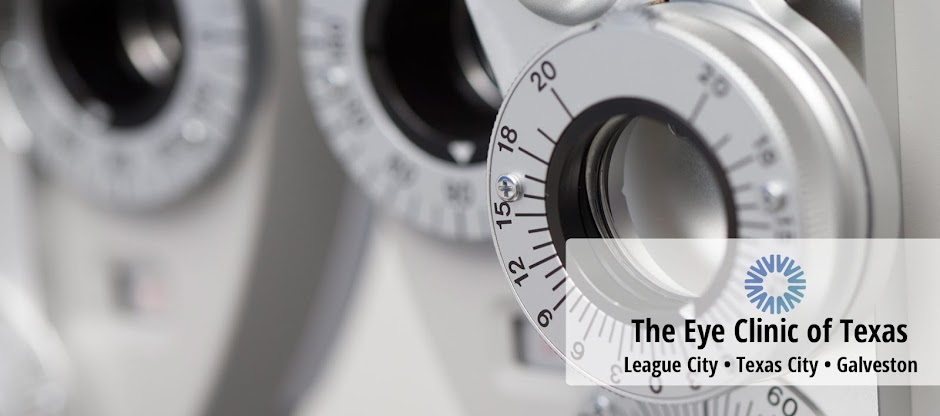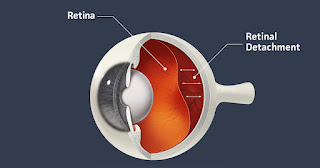A detached retina is when the retina lifts away from the back of the eye. The
retina does not work when it is detached, making vision blurry. As we get
older, the
vitreous gel in our eyes starts to shrink
and get thinner. As the eye moves, the vitreous moves around on the retina
without causing problems. But sometimes the vitreous may stick to the retina
and pull hard enough to tear it. When that happens, fluid can pass through the
tear and lift or detach the retina.
Who is at Risk of a Detached Retina?
Patients who are at greater risk for detached
retina are those who:
>Are nearsighted and need glasses to see
far away
>Have had eye surgery such as cataract surgery
>Have had a serious eye injury
>Have had a retinal tear or detachment in the other eye
>Have family members who had retinal detachment
>Have weakened areas in their retina from thinning or
degeneration
What are Symptoms or Warning Signs of a Detached Retina?
>Sudden Flashes of
Light. Some people say this is
like seeing stars after being hit in the eye.
>New Floaters. These can look like specks, lines or cobwebs in
your field of vision.
>A Shadow
in Your Side Vision.
>A Gray
Curtain covering part of your field of vision.
A detached retina is a serious problem. If you experience any warning signs of a detached retina you need to have it examined immediately or you risk losing vision please call The Eye Clinic of Texas, an affiliate of Houston Eye Associates, at 800-423-3937, visit The Eye Clinic of Texas, or Facebook.
The Eye Clinic of Texas is an affiliate of Houston Eye Associates, the largest ophthalmology clinic in the nation. We are a leading eye care practice serving the greater Houston, League City and Texas City with offices at 1100 Gulf Freeway, Suite 114, League City, Texas 77573.



